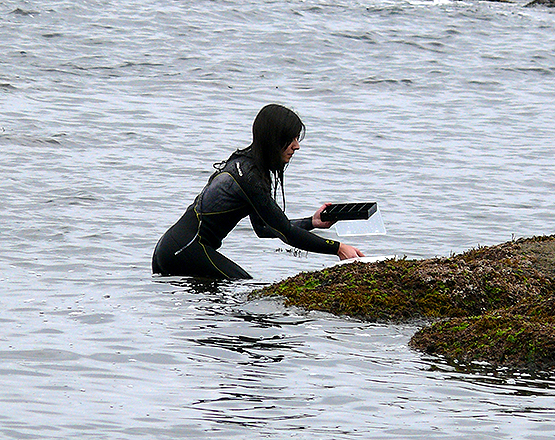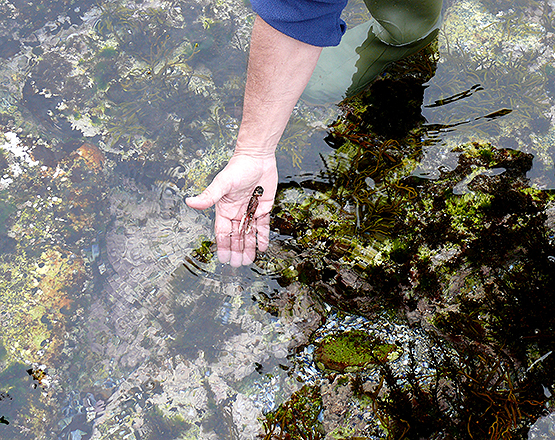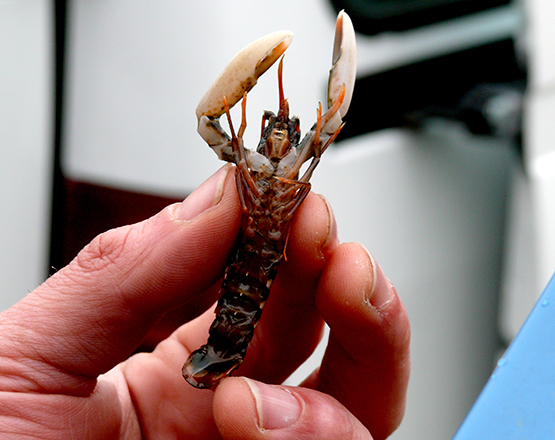El bogavante no es un producto barato. Desde que llegan a nuestro mercado de forma masiva bogavantes de la costa de Nueva Inglaterra, para los que se abren, incluso, nuevas líneas comerciales, los precios han bajado y se han convertido en un producto asequible, pero los ejemplares nacionales siguen siendo un producto que no podemos considerar cotidiano.
Todos –yo el primero- hemos caído en la tentación de pensar que el precio de este marisco está sobredimensionado. Al fin y al cabo se trata de capturarlo con unas nasas y llevarlo a la lonja. Y es cierto que en invierno hay olas, temporales, corrientes… pero todos hemos pensado que ni aun así se justificaban sus precios en el comercio minorista. Aunque estoy de acuerdo en que las cantidades que se piden por un bogavante en fechas puntuales como la campaña navideña son exageradas, hace unas semanas tuve ocasión de participar en una actividad no estrictamente gastronómica que cambió mi forma de enfrentarme a este crustáceo y a su valor comercial. El primer día de la primavera pude acompañar a los técnicos del Instituto Galego de Formación en Acuicultura (IGaFA) y a personal del proyecto O Canto da Balea en la puesta en libertad de mil crías en la reserva marina de Os Miñarzos, en plena Costa da Morte.
Aunque estoy de acuerdo en que las cantidades que se piden por un bogavante en fechas puntuales como la campaña navideña son exageradas, hace unas semanas tuve ocasión de participar en una actividad no estrictamente gastronómica que cambió mi forma de enfrentarme a este crustáceo y a su valor comercial. El primer día de la primavera pude acompañar a los técnicos del Instituto Galego de Formación en Acuicultura (IGaFA) y a personal del proyecto O Canto da Balea en la puesta en libertad de mil crías en la reserva marina de Os Miñarzos, en plena Costa da Morte. Vale la pena que nos detengamos un momento a explicar algunos de estos nombres, porque creo que ayudarán a entender los precios finales que se alcanzan en el mercado. La Reserva de Os Miñarzos es un proyecto pionero en España en el cual una pequeña zona de la costa coruñesa es sometida a vigilancia y a un control exhaustivo de las capturas. Las cantidades que pueden pescarse están muy limitadas, las artes que se emplean tienen que ser aprobadas previamente y hay una vigilancia permanente tanto de la costa como de la zona de aguas protegidas y, por supuesto, de todo lo que se descarga en la lonja local.
Vale la pena que nos detengamos un momento a explicar algunos de estos nombres, porque creo que ayudarán a entender los precios finales que se alcanzan en el mercado. La Reserva de Os Miñarzos es un proyecto pionero en España en el cual una pequeña zona de la costa coruñesa es sometida a vigilancia y a un control exhaustivo de las capturas. Las cantidades que pueden pescarse están muy limitadas, las artes que se emplean tienen que ser aprobadas previamente y hay una vigilancia permanente tanto de la costa como de la zona de aguas protegidas y, por supuesto, de todo lo que se descarga en la lonja local.
Por si con eso no fuera suficiente, cada uno de los crustáceos que se liberan se marca mediante un sistema similar al de los microchips para perros. La lonja y los barcos autorizados a faenar en la zona están dotados de lectores para poder identificar, en el momento de la captura, la edad del ejemplar, cuándo y dónde fue liberado, etc. Seguimos sumando personal y tecnología que repercuten en la trazabilidad del producto, pero también en su precio. Los bogavantes que liberamos aquella mañana llegaron en tanques de agua desde la Ría de Arousa, a unos 100 km. Allí, en el IGaFA, se procede a la inseminación y al control de las puestas hasta que los ejemplares tienen un tamaño mínimo. Es en ese momento cuando se trasladan a bateas, las mismas que se emplean en la Ría para criar mejillón, donde permanecerán en jaulas durante un año.
Los bogavantes que liberamos aquella mañana llegaron en tanques de agua desde la Ría de Arousa, a unos 100 km. Allí, en el IGaFA, se procede a la inseminación y al control de las puestas hasta que los ejemplares tienen un tamaño mínimo. Es en ese momento cuando se trasladan a bateas, las mismas que se emplean en la Ría para criar mejillón, donde permanecerán en jaulas durante un año.
SÓLO SOBREVIVE UN 20%
Cuando llegan a Os Miñarzos los bogavantes miden apenas lo que un dedo meñique. Algunos han muerto durante el viaje. Una vez allí, los técnicos y estudiantes se enfundan en trajes de neopreno –el agua en Costa da Morte en marzo no es ninguna tontería- y se distribuyen por cientos de metros de playa y acantilados. Los ejemplares tienen que ser liberados manualmente, uno a uno, con una distancia mínima entre ejemplares de unos tres metros. Se trata de animales territoriales y muy agresivos que, si no se hiciera de este modo, se devorarían entre si.
La cosa lleva unas cuantas horas. Algunos de los técnicos, incluso, se ponen el equipo de buceo y llevan algunos ejemplares algo más lejos de la orilla para asegurar la dispersión y aumentar las posibilidades de éxito. Posibilidades de éxito, sí, porque después de todos esos meses de trabajo y del cuidado puesto en encontrar una pequeña cueva o un refugio en las rocas para cada uno de los mil, al final solamente un 20% de los ejemplares liberados llegarán a vivir para alcanzar la talla comercial. Hablamos, por lo tanto, de unos 200 bogavantes, poco más o menos, que sobrevivirán al par de años que todavía les falta para poder ser comercializados. Tras esos tres años de inseminaciones artificiales, cría controlada en cautividad, crecimiento en batea, transporte, inserción en su hábitat; tras el trabajo de técnicos, voluntarios, pescadores, personal de lonja, distribuidores y pescaderos. Después de todo eso, cada uno de los 200 supervivientes se venderá a unos 15-18€ en pescadería. Es fácil hacer la cuenta. Eso son unos 3000 – 4000€ para pagar el trabajo de toda esa gente y los años de espera.
Hablamos, por lo tanto, de unos 200 bogavantes, poco más o menos, que sobrevivirán al par de años que todavía les falta para poder ser comercializados. Tras esos tres años de inseminaciones artificiales, cría controlada en cautividad, crecimiento en batea, transporte, inserción en su hábitat; tras el trabajo de técnicos, voluntarios, pescadores, personal de lonja, distribuidores y pescaderos. Después de todo eso, cada uno de los 200 supervivientes se venderá a unos 15-18€ en pescadería. Es fácil hacer la cuenta. Eso son unos 3000 – 4000€ para pagar el trabajo de toda esa gente y los años de espera.
Sin duda en restaurante cada ejemplar se venderá a un precio más alto. Hay que sumar el margen de beneficio del local y de su equipo. Es posible que por un arroz de bogavante para dos personas paguemos entre 30 y 50€. Pero sabiendo todo el trabajo que hay detrás, el esfuerzo investigador y la cantidad de gente implicada en el proceso ¿Quién puede decir que sea caro? ¿Quién puede dudar de dónde radica la diferencia de precio con ejemplares importados?
Photo: Jorge Guitián



34 Comentarios